Not far from Kraków, a little over forty miles (70km) to the west, is a little town called Oświȩcim. This little town would probably be overlooked by tourists if it weren’t for its dark history. For it is in this little town that you will find Auschwitz Concentration Camp and Auschwitz-Birkenau.
Disclaimer: Due to the sensitive nature of this post, please be aware some of what follows will be my opinion. It is hard to go to Auschwitz and not be affected, and it is even harder to write about. It is not my intention to offend anyone with my opinions. However, if you feel that I have the wrong end of the stick, please leave me a comment and I will look into it.
This infamous concentration camp of Poland, in my mind, should be visited by everyone. Not as a “bucket-list” item, but as a lesson. This place of dark tourism is a very important part of European history. Therefore, it needs to be remembered and seen to fully understand the horror of the Holocaust. To see the evil side of human nature, the dangers of an isolationist policy, the dangers of blaming a minority for your own situation, and the dangers of propaganda, Auschwitz drives these lessons home.
Nothing can prepare you for visiting, you can read and read how it affects people and how horrifying the place is. You may even look at images, but to see it in person is something else. Even now, as I write about it a few years after visiting I am experiencing a tidal wave of emotions that I can not explain. But that doesn’t mean you shouldn’t visit Auschwitz, on the contrary. Just be aware that a visit is likely to break your heart.
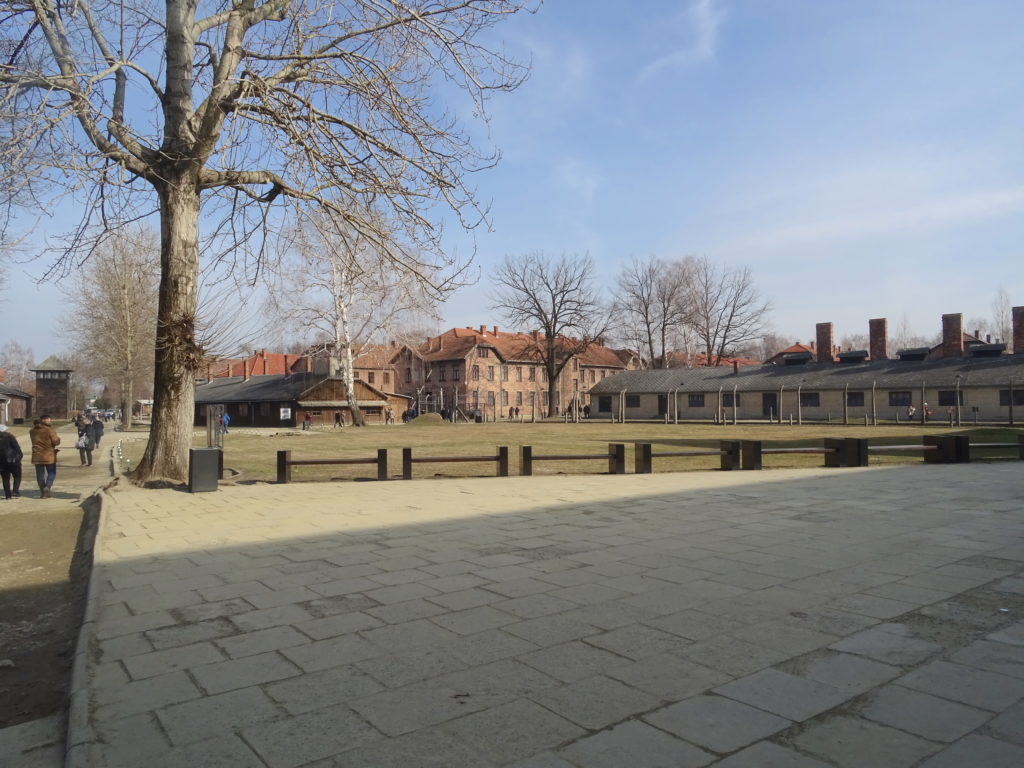

The View Of The Camp
A Brief History Of Auschwitz
The building of Auschwitz concentration camp began in April of 1940. The location was chosen, according to Himmler, because of its “convenient location as regards communication, and because the area can be easily sealed off.”
Rudolf Höss was given command of the camp. The first prisoners arrived in June 1940, there were about seven hundred of them. The first prisoners to arrive at Auschwitz were Polish political detainees. Due to being overworked and undernourished, there were high mortality rates from the start. The camp was a source of forced labour and so many German manufacturers moved to Auschwitz to make use of this ‘resource’.
In 1941, the subsidiary camp of Birkenau was built, with the intention to boost the slave-driven economy of Auschwitz. However, due to the high number of deaths of Soviet prisoners, this was not to be. Instead, the camp had its purpose changed to a much more sinister one. Instead, it would be used for the mass murder of Jews, called the “Final Solution”.
The Role Of Auschwitz In The “Final Solution”
The “Final Solution” was the official code name for the murder of all Jews that could possibly be reached. And so, by the end of 1942 Jews from all over Europe were being transported to their deaths at Auschwitz. Nazi propaganda made many believe that they were simply being transported to a new life. They were told that they were being sent to work in German factories and farms, which is why they brought their personal possessions with them.
The train journey to Auschwitz could take up to ten days. They were transported in sealed goods wagons and cattle trucks. On arrival, the victims would be lined up and inspected. They were separated into to classes “fit” or “unfit” to work. Up to 75% of all new arrivals were deemed as “unfit”.
Those classed as “unfit” were told that they were permitted to have a bath. They were then ordered to undress, taken to the “shower room” and murdered by the means of poisonous gas being sprinkled through special ceiling attachments. This allowed for up to two-thousand people to be killed at a time. Each mass murder took fifteen to thirty minutes.
From 1944 onwards, the greatest massacres happened. This was after a special railway terminal was installed at Auschwitz-Birkenau which made the “processing” faster.
Before the victim’s bodies were burnt, SS guards took what they could from the bodies. Jewellery, fillings and even hair were stripped from the bodies. What was taken was used by the Nazis. For example, the hair was used for mattresses and their clothes processed into army uniforms.
Auschwitz Liberation
As the Soviet army was approaching Auschwitz, the Nazis evacuated. The final evacuation of the camp saw 56,000 prisoners take up the “Death March”. Many prisoners died on this march, which saw them march westward. Anyone who was sick or couldn’t keep up was shot.
In January 1945 Auschwitz was liberated by Soviet forces, though camp liberations were not their main intention, just a consequence of advancing westward in Poland. Those that were too ill to be forced on the death march had been left to die. About 7,000 prisoners had been left and so were freed by the Red Army.


The Dark History Of Auschwitz Can Be Felt Everywhere
Auschwitz Facts
Auschwitz has more than a few horrifying facts. Here are just a few:
- Auschwitz was actually three camps in one, there was a slave camp, a prison camp and an extermination camp;
- It is unknown how many people died in Auschwitz, estimates put the figure between 1.1 and 1.5 million;
- Of those that died here, 95% were Jews;
- Poles were the second-largest victim group in the camp
- Roma (gypsies) were the only other group, besides Jews, to be gassed in family units.
Visiting Auschwitz
The museum and memorial of Auschwitz is in the Auschwitz I camp. You can also visit Auschwitz-Birkenau, which has been left pretty much as it was found. I highly recommend making sure you leave enough time to see both, to fully understand the horror of the place.
However, this post is dealing with Auschwitz I only. In the concentration camp, the blocks have been turned into exhibitions about different parts of the camp. Each exhibition deals with a different theme.
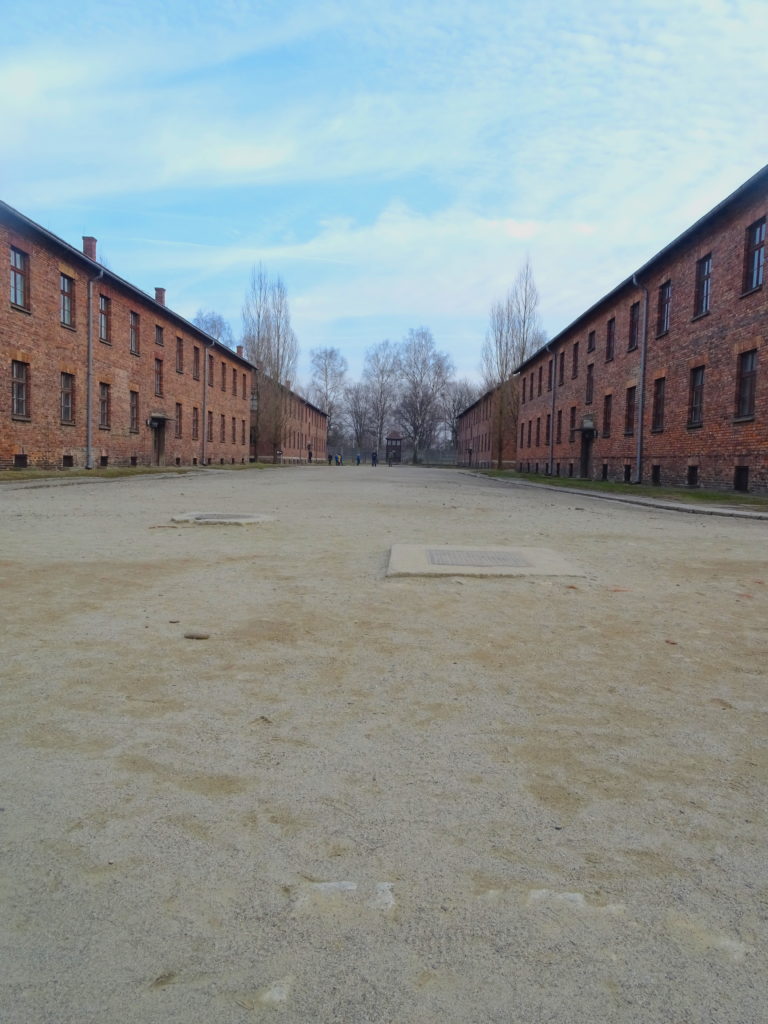

The Blocks Now Contain Exhibitions
When you first walk into the camp, you enter via the gate which bears the slogan “Arbeit Macht Frei” which means “work sets you free”. From there you can wander around the site and go into various buildings. Once through the gates, you are enclosed in the camp. There are fences with barbed wire like there would have been in its past.
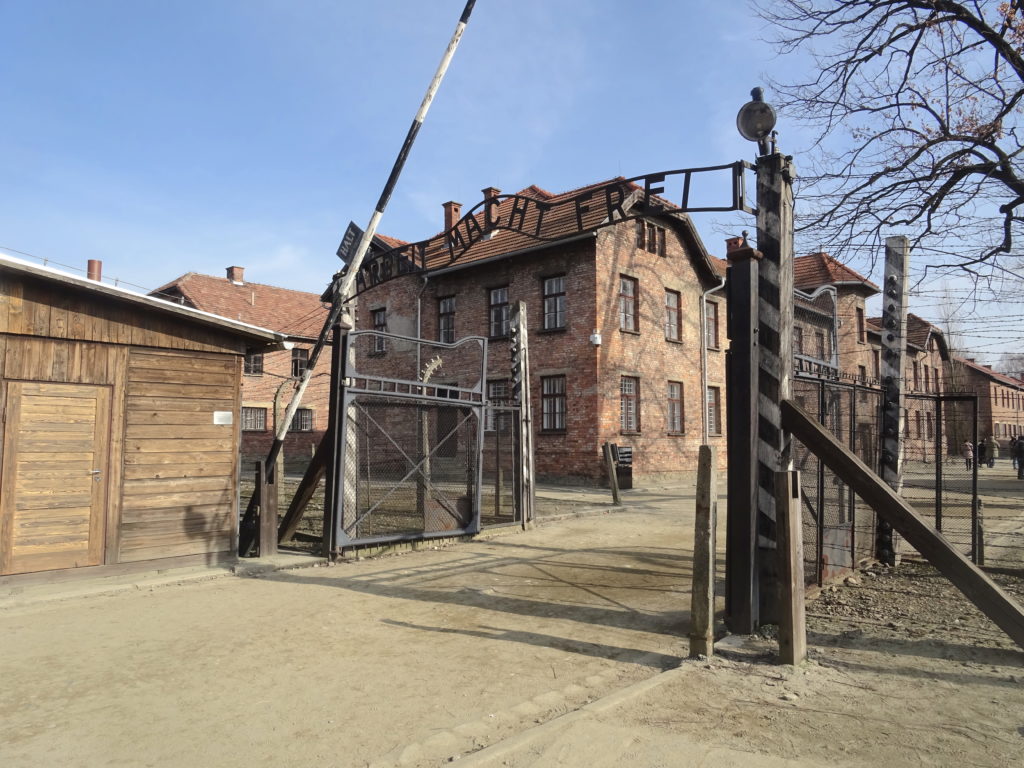

The Slogan On The Gates Translates As “Work Sets You Free”
Exhibitions
In each exhibition, you will find photographs of the victims and of life in the camp, memoirs and stories of prisoners and guards, information about the history and life in the camp, and important objects. Some of the blocks you may want to see are:
- Block 15. This block gives you a historical introduction;
- Block 6. In here you learn about the everyday life of the prisoners;
- Block 13. Learn about the Roma (gypsies) and their persecution in this block;
- Block 11. This was the prison block of the camp, where many were tortured and executed. I found this block difficult, some of the stories are very hard to stomach and the shooting wall is a stark reminder of the executions;
- Block 5. This exhibition was the hardest of all for me, but should not be missed out. This is dedicated to “Material Evidence of Crime” here are displays of objects taken from victims that were found here. There are suitcases and hair. But it is the shoes that have the most powerful effect. This display takes up half a barracks room and the amount is staggering. It really drives the numbers home. And the range of sizes and styles makes every victim become a person instead of a statistic that you have read about. I did not take a picture of this, I simply couldn’t, but its image is one I don’t think I’ll ever forget. So be sure to go into Block 5, but be prepared for a shock.
In the grounds, you can also visit the first gas chamber on the site. This gas chamber and crematorium was used until the mass murders were moved to Birkenau.
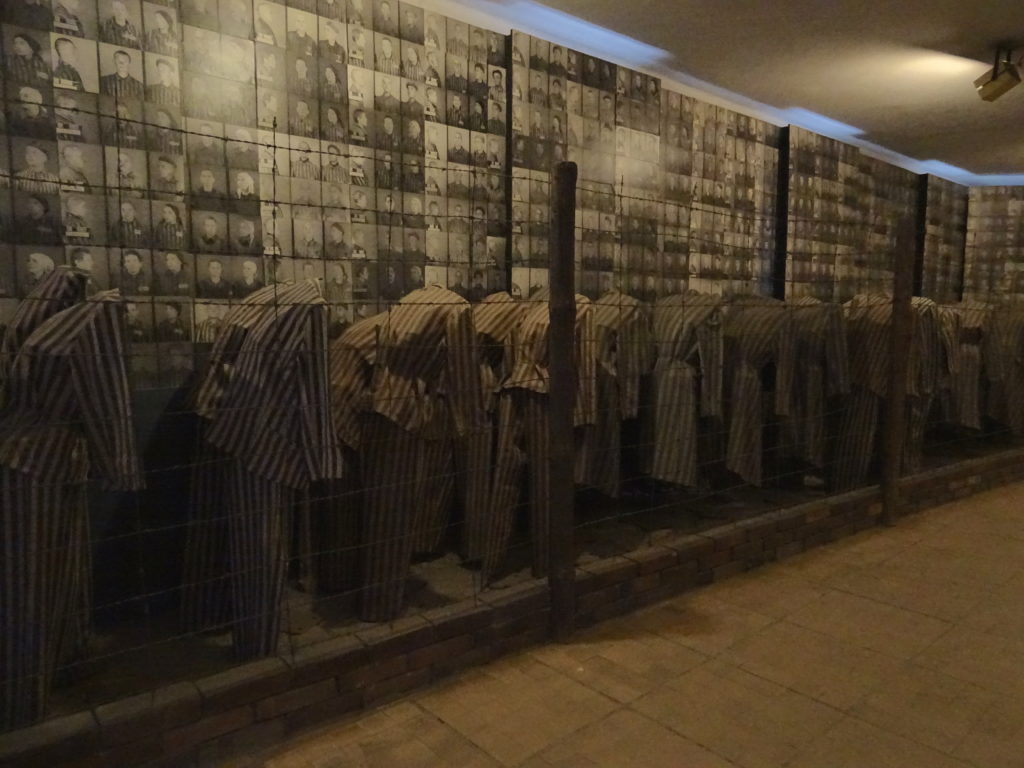

The Exhibitions Are Powerful
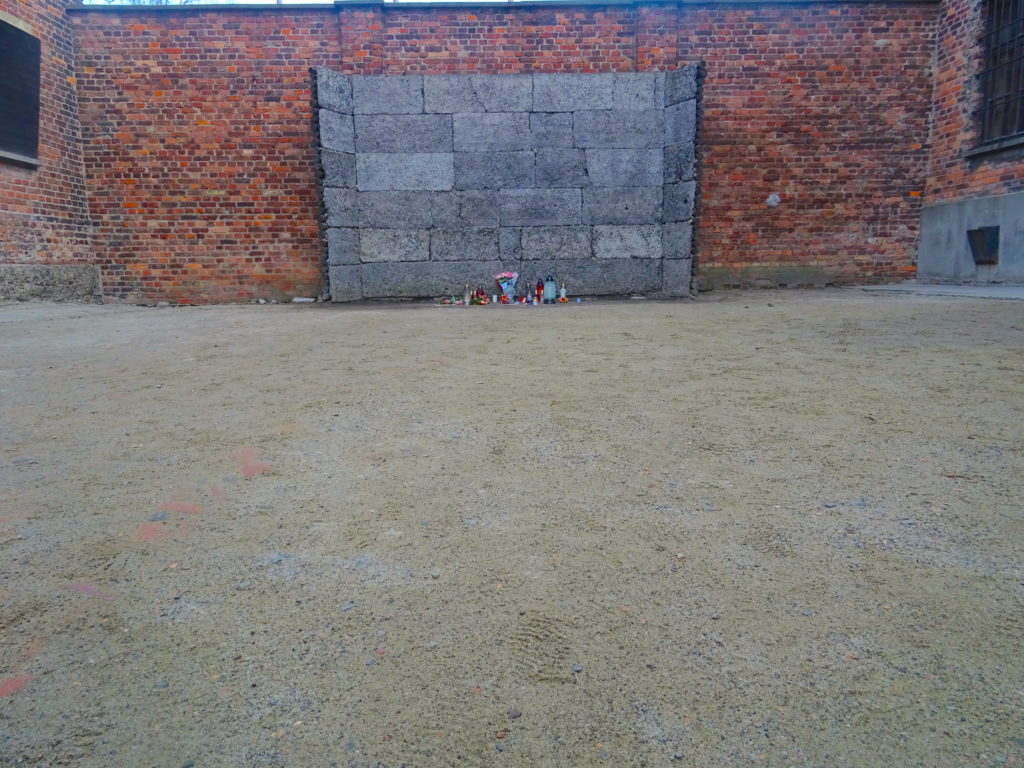

People Leave Offerings At The Shooting Wall In Remembrance
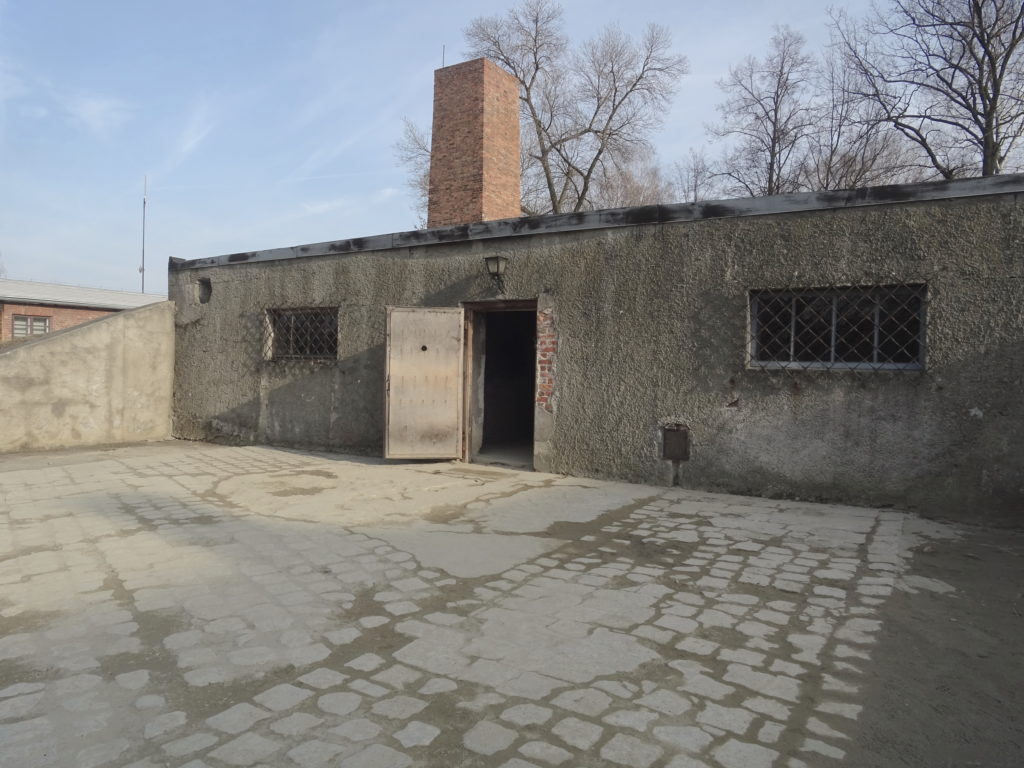

The First Gas Chamber In Auschwitz
Important Information About Visiting
Before visiting be aware that this place is, I have no other word for it, horrible. It is heartbreaking. Though you should visit, remember what you are visiting and what happened here. When you visit Auschwitz please keep in mind:
- The dark history of the place. It is a sombre place to visit and it should remain that way. Be respectful. I was awed by how quiet the place was, which is as it should be. Though I won’t say “don’t laugh”, some people deal with grief and horror in funny ways and if your coping mechanism is laughing, that should be acceptable. But don’t go cracking jokes;
- Make sure you visit for the right reasons. Do not visit simply to “tick an item off your bucket list”. Go to try to understand the horror of the Holocaust and pay respects to its victims;
- Photos are allowed in most of the exhibitions and outside. However, where no photos are allowed, don’t take photos. Also, in the exhibitions, the use of flash is prohibited, this is due to the damage a camera flash can cause. So don’t use your flash;
- Think about the photos you take. Are selfies really appropriate? Personally, I don’t think so. Smiling faces on pictures of this camp just seem inappropriate to me.
You can find full rules for visiting here.
Practical Info
On a different note, here are some practical bits to consider before visiting:
- It is advisable to book tickets in advance, you can book your tickets here. When booking you will be given a time slot for entry Alternatively, you can just show up, but you will likely have to queue to get tickets, so get there early. When you buy tickets you will also be given a time slot;
- Wear comfortable clothing; you will likely spend a full day here and do a lot of walking, so dress appropriately. Wear comfortable clothing and footwear. On another note, think about any slogans you might be displaying on your clothes, and if they are appropriate;
- No large bags are allowed into the museum and memorial, the maximum size is 30x20x10cm. So travel light. Lockers are available for larger items;
- It is advisable that children under fourteen do not visit the site;
- Large groups are required to hire a guide. Small groups and solo travellers are not required to do this.
More information can be found here.
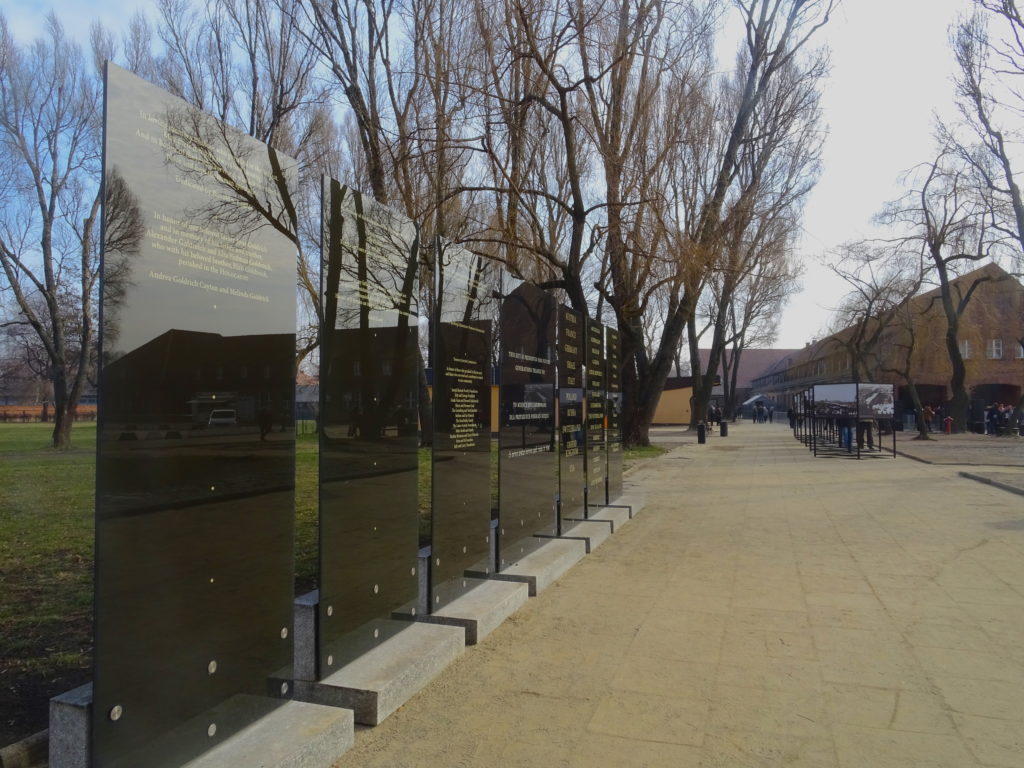

Heading To The Entrance
How To Get To Auschwitz
It is most common to go from Kraków to Auschwitz, though the camp can also be reached from Warsaw, though the journey is longer. It is definitely more practical to visit the camp on a day trip from Kraków.
To do this you can book a tour from Kraków. With a guided tour you can be sure you see all the main important bits and have transport provided. Most tours include Auschwitz I and Auschwitz-Birkenau. You can also do a tour that takes in Auschwitz and the Wieliczka Salt Mine in one day, such as in this tour. This is a good option if you are pushed for time.
Have a browse at Auschwitz tours on Get Your Guide.
Alternatively, you can get to Auschwitz from Kraków on your own. Doing this allows you to go through the exhibitions at your own pace. Though make sure you book a time slot in advance.
To get to Auschwitz from Kraków, you can catch a train or bus from the central station. Buses from Kraków also drop off at the train station in Oświȩcim. You can book transport with Flixbus.
The train station at Oświȩcim is about 1 mile (2km) from the concentration camp. This is about a twenty-minute walk.
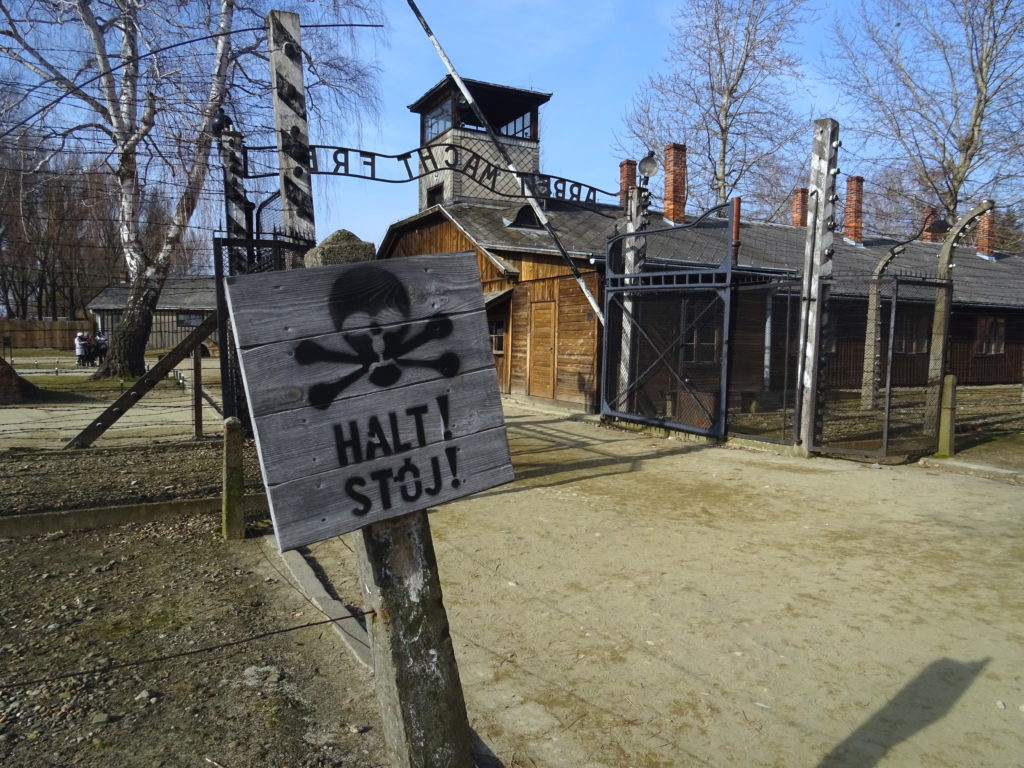

Auschwitz Is An Important Place To Visit
Visiting Auschwitz was one of the hardest things I have done. Seeing the concentration camp drives the horror of the Holocaust home. I would not say it is a “must-see”, but everyone should visit.
If you plan on visiting I recommend staying in Kraków and doing a day trip from the city. Go to HostelWorld for nearby hostels. Also, check out day trips available on Get Your Guide.
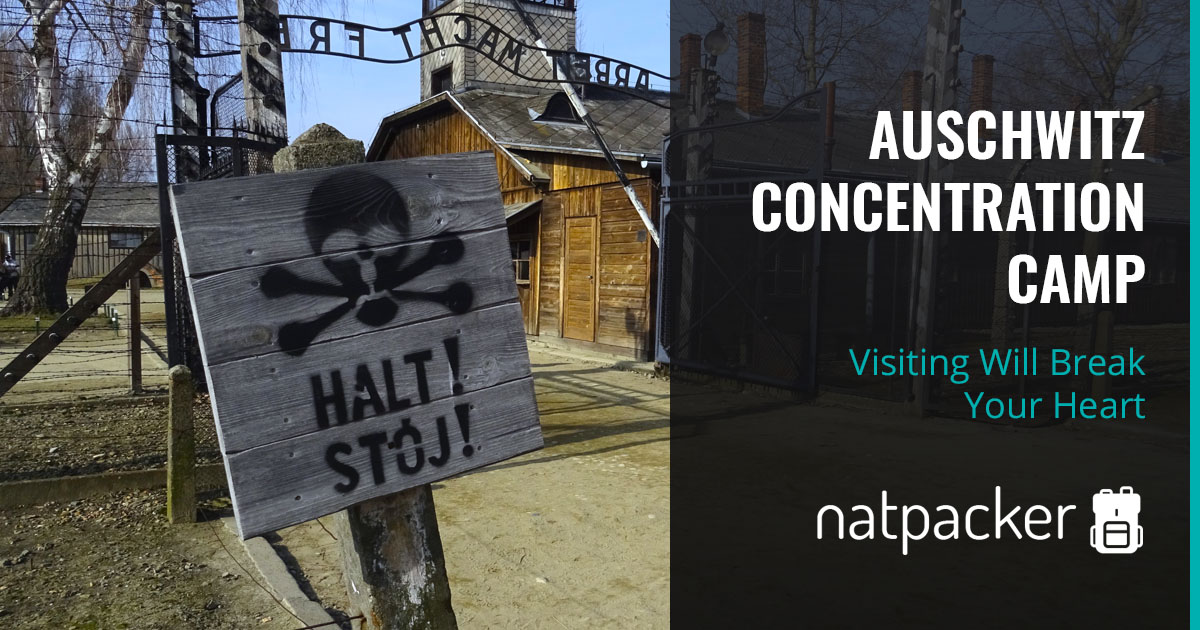
8 Comments
Well written article about a sensitive subject. Thanks for sharing.
Thanks. Glad you found it useful.
Thank you for sharing your experience. It’s true what you say, you can read tons about places like this and it doesn’t prepare you. I haven’t personally gone to Auschwitz but I have been to Hiroshima and it does break your heart. I think visiting places like these are important so that we do not forget what us humans can be like at our worst and reflect on it.
Humans can definitely be the worst. And you’re right, it’s so important to visit these places, even though it’s difficult. They hold up a mirror to the worst side of humanity.
Thank you for writing and sharing this place and experience. When I visited, I had mixed emotions about taking pictures and sharing it with friends and family for complex reasons, so I understand how intricate this post must’ve been to do.
Glad you found the post useful. It is such a difficult experience, isn’t it? I couldn’t take pictures of the shoes, that was just gut-wrenching.
Thanks for the informative post! It will certainly be an interesting but sombre place to visit. Hopefully one that will help us learn from the mistakes of humanity, though sometimes I wonder if we ever will. We visited the Killing Fields in Cambodia and that was a really tough visit – I imagine similar to this.
Interesting but sombre is definitely the right description. I really do hope one day humanity will learn from past mistakes. I imagine the Killing Fields are similar. There’s definitely something about dark tourism.